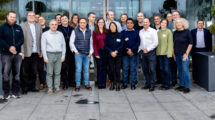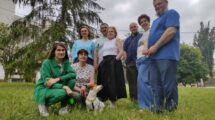This interview is part of a series highlighting the objectives, roles and mission of GÉANT Community Programme’s special interest groups and task forces.
Yatish is presently an affiliate with ESnet, the networking provider for the US Department of Energy. Yatish has more than 30 years of networking industry experience. He has been involved in a number of successful start-ups. At Corsa Networks, a leading provider of SDN switches, he was the founder and CTO. Prior to that at Catena Networks, which was acquired by Ciena in 2004, he led the design team responsible for developing the industry’s lowest power ADSL and POTS codecs which allowed Catena to become the leader in ADSL retrofits in all major RBOC accounts. Prior to Catena, Yatish started his career at Nortel where he contributed to and managed the development of a number of mixed signal semiconductor projects including designs for ADSL, POTS, CDMA, Cable Modems and handsets. He holds patents in DSP architectures, and data compression and has authored papers on high level synthesis, and embedded processor design as well as contributing to the development of ITU 992.1, ANSI T1.413 and Telcordia GR909 standards. But all this pales compared to the adventure of networking in support of large science at DOE. Yatish’s research interests include real time DSP processing, processor architectures, as well as FPGA accelerated network packet processing.
Yatish, in SIG-NGN you work with other experts of the research and education (R&E) networking community from all over the world. This shows the power of our community! Can you tell us in your own words what SIG-NGN is about and what your contribution to it is?
Global collaboration is the core value of R&E networking. Having communities where we can meet, discuss and advance networking together is essential. Many such communities exist, TNC, I2 Tech Ex, GNA, Supercomputing, etc.. But for each of us, a key question is “where do I want to spend my time?” Which forum attracts like-minded people and does work that I enjoy? For me, SIG-NGN is the single place where I choose to spend that time. I consider the leadership group a set of long-term friends, and have enjoyed every conversation I have had with them over the last 10 years. Unlike other forums, SIG-NGN has a wonderful creative mission to “simply talk and learn about future tech”. This gives us the freedom to build a unique agenda for each meeting. It is rewarding to see 85+ people attend these meetings to simply listen for a couple of hours, before returning to their daily work. The GÉANT community is largely Europe centric. However, SIG-NGN is one of the forums where I am pleased to bring speakers and participants from North America to make the discussion richer and more complete.
Now that we have mentioned what you bring to table, we are curious to know what the value of SIG-NGN to you and your daily work at ESnet is. You are a long standing member of the GÉANT Community Programme – what keeps you to stay?
SIG-NGN is one of the vehicles ESnet uses to remain current on emerging R&E networking technology. I present and listen at every SIG-NGN meeting. ESnet as an organisation participates in almost all R&E forums, but as I mentioned above, I personally stay because I like the people involved in SIG-NGN, as well as the quality and style of work that is done there.
What are some key topics and technology trends that SIG-NGN has been focusing on?
SIG-NGN tries to rotate through a diverse set of topics that hold the interest of our participants and allow them to walk away with a deeper understanding of issues that they might not have time to explore in their daily routine. These include 5+ year predictions for optical and packet switched networking. New use cases for R&E networks, new technology such as quantum and satellite networking, and programmable networking technologies such as FPGAs , and P4 switches. As well, we try to construct sessions around different user types, such as core networking engineers, NREN ISPs, large science instruments, and remote and rural providers.
The needs of network technology research are changing, with users demanding more reliable and powerful real-time data processing and higher capacity for the next generation research infrastructures. How is SIG-NGN and the key institutes and organisations in the field of next
generation networking addressing such developments?
Real-time data processing is one of the largest areas of growth and research at DOE and ESnet. We operate numerous colliders and particle accelerators, all of which need real-time processing at the scale of supercomputers. We have shared our future network technologies and research for streaming based on FPGAs and ESnet’s High Touch telemetry service. As well, in the future, holding dedicated SIG-NGN meetings on the needs and requirements for large scientific instruments like LHC, and SKA as well as supercomputing facilities is very much in the realm of what SIG-NGN aims to cover. It is a great place to compare notes between science at DOE and science in Europe.
The field of next generation networking covers very innovative topics, how does the SIG manage to bring in and include in the conversation NRENs where the technology is less mature?
SIG-NGN is an open community that always creates space for mature and less mature NRENs to either describe their problems, or showcase their solutions. The steering committee is composed of veterans at GÉANT who are generally aware of all aspects of the community. Using this knowledge we either invite specific thought leaders or publish a call for discussion by volunteers who have something to say. At the recent SIG-NGN 9, we had talks around the challenges of bringing internet access to rural Canada for example. The GÉANT RARE project has presented technology that can help build low-cost networking on white box hardware.
Stay updated on SIG-NGN activities, achievements and future meetings on the group’s wiki page.
More on the GÉANT Community Programme, its mission and tasks can be found here.







